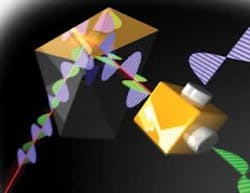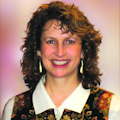
Miniature spectrometers, near-infrared spectroscopy, and chemical imaging are just a few of the optics- and photonics-oriented topics that will be explored at Pittcon 2009, the 60th Pittsburgh Conference on Analytical Chemistry and Applied Spectroscopy (McCormick Place; Chicago, IL). The main part of the event is scheduled for March 8 through March 13; short courses run Saturday, March 7, through Friday, March 13. Courses are segmented into 53 topic areas, including spectroscopy (plus Raman, infrared, and mass, among other flavors), microscopy, and imaging.
Technical program highlights
The technical program, which begins Sunday, March 8, at 1 p.m. and continues through Thursday, March 12, at 5 p.m., aims to provide “the world’s most comprehensive coverage of the latest developments in the traditional and emerging disciplines of analytical chemistry and applied spectroscopy.” It features collaborations with the American Chemical Society Division of Analytical Chemistry, the Society for Applied Spectroscopy, and the Japan Analytical Instrumentation Manufacturers Association. Major focus areas of the program include:
- Bioanalytical chemistry
- Proteomics, genomics, and metabolomics
- Biomedicine
- Informatics
- Microfluidics
- Chemical Imaging
- Pharmaceutical science
- Nanotechnology
- Homeland security
- Food analysis and regulatory affairs
- Applied molecular spectroscopy
- Mass spectrometry
- Chemical separations
- Education
Sunday begins with symposia, oral, and poster presentations, followed by an award presentation, a plenary lecture, and a poster mixer. Professor George M. Whitesides of Harvard University (Cambridge, MA) will set the forward-looking tone for the week with the opening plenary at 4:30 p.m.
“Dr. Whitesides is an innovator–someone whose ideas have had substantial and lasting impact on so many areas in the natural sciences, not the least being the chemical measurement arena,” says Pittcon 2009 Program Chair Mitchell Johnson. Whitesides’ talk, “Paper Diagnostics–Using First World Science in Developing Countries,” will explore the challenges and opportunities involved in adapting technologies to the requirements (including simplicity, low cost, ruggedness, and independence of infrastructure) of developing economies.
“The area is one that will benefit enormously from new ideas,” Whitesides explains in his lecture description, adding that successful solutions will also apply in the developed world (who doesn’t want effective, low-cost solutions?). Like much of the rest of the conference, Whitesides’ talk will emphasize medical diagnostics, and will present two new technologies: microfluidic systems based on patterned paper, and microanalytical systems using magnetic levitation.
Awards and papers
A number of awards will be presented at the event, and separate sessions are organized around them. For instance, the 2009 Pittsburgh Spectroscopy Award will be presented to Ira W. Levin of the National Institute of Diabetes and Digestive and Kidney Diseases (Bethesda, MD), and on Tuesday, March 10, at 1:30 Dr. Levin will make a presentation during a 2.5-hour session organized around this and the Maurice F. Hasler Award, which will be presented to Gary M. Hieftje, distinguished professor and Mann Chair of Chemistry at Indiana University (Bloomington, IN).
Pittcon’s invited papers are broken into 30 topic areas. Not all will be of interest to optics and photonics professionals, but some that are include Novel Methods of Optical Sensing (under the heading Sensors/Integrated Sensor Systems), Use of Lasers and Other Intense Light Sources in Art Analysis and Conservation (in the section Art/Archaeology), and Biomedical Spectroscopy–The New Frontier for Applications of Miniature Spectrometers (among other topics within the Biomedical subject area).
Another component of Pittcon is a series of “contributed organized sessions.” One of these, the three-hour Biomedical Spectroscopy–The New Frontier for Applications of Miniature Spectrometers program, takes place Thursday, March 12, at 1:30, and covers a broad range of applications enabled by a new breed of molecular spectroscopic analytical instruments paired with optical telecommunications capabilities to enable miniature spectrometers in the emergency room, operating theater, and in vivo. Applications and topics include detection and characterization of coronary plaque and breast tumors, detection of drugs in body fluids using SERS (surface-enhanced Raman spectroscopy), and even design tradeoffs driving miniature spectrometer development.
A gathering of NIRS pioneers
The James L. Waters Annual Symposium, designed to explore important scientific instrumentation, will focus its 20th edition on near-infrared spectroscopy (NIRS) beginning on Monday at 1 p.m. Attendees will hear from pioneers important to the development of NIRS, including Peter Flinn of Kelspec Services Pty (Dunkeld, Victoria, Australia), and also chair of the International Council for Near Infrared Spectroscopy, who pioneered development and implementation in both research and commercial applications; Karl Norris, widely considered to be the “father” of NIRS; Franklin “Woody” Barton, who helped launch the National NIR Research Project which became a worldwide network of collaborating laboratories; Phil Williams, a key contributor to the introduction of NIRS technology to Canada, Australia, Europe, Russia, the Middle East, and South America, who will speak on NIRS in commerce; and Robert A. Lodder, who is professor of pharmaceutical sciences at the University of Kentucky Medical Center, and who will discuss Modern Applications of Near-Infrared Spectrometry.
And don’t miss…
Certainly there’s enough in the conference to keep you busy all week, but the exhibit hall will be full of interesting surprises and it’s important to make time for that, too. The hall opens Monday, March 9, at 9 a.m. and closes down Thursday, March 12, at 3 p.m. Included will be many interesting exhibits, including the start-up Ahura Scientific (Wilmington, MA), which recently announced shipment of its 2000th ultracompact handheld spectrometer for chemical identification. AstraZeneca (London, England), the pharmaceuticals giant, is using its device, a Raman-spectroscopy-based instrument, to identify incoming raw materials used in drug manufacture.
BiOptix (Boulder, CO), one of six finalists in the recent BioWest Venture Showcase competition sponsored by the Colorado BioScience Association (CBSA), will also be on hand. BiOptix has developed a highly sensitive sensor for detection of trace amounts (on the order of pg/mm2) of bacteria, viruses, proteins, nucleic acids, antibodies, and other biological and chemical agents in real time and with minimal human intervention. Recently, BiOptix scientists used the prototype biosensor to detect clinically significant levels of human micro RNAs, which promises early diagnosis of a variety of cancers. Conceived by BiOptix Chief Scientific Adviser and Nobel Prize Laureate Dr. John Hall, the product’s design relies upon the common-path interferometric-detection principle in combination with nonresonant surface-plasmon excitation.
Another interesting exibit will be Ocean Optics’ (Dunedin, FL) line of high-sensitivity back-thinned 2-D FFT-CCD spectrometers for low-light-level, UV-sensitive, and other scientific applications. Its uncooled Maya2000 and Maya2000-Pro will be on hand. These spectrometers promise greater than 90% quantum efficiency, high dynamic range, and excellent deep-UV (shorter than 190 nm) response.
Also participating will be optical-fiber maker Fiberguide (Stirling, NJ), laser-diode maker Power Technology (Little Rock, AR), photonics-related components and subsystems maker CVI Melles Griot (Albuquerque, NM), Thermo Fisher Scientific (Waltham, MA) in all its permutations, PerkinElmer (Waltham, MA), and Rigaku (The Woodlands, TX). There are many other exhibitors at Pittcon of interest to folks looking for optics and photonics; you can search the extensive list at pittcon.org/exposition/index.html.
Finally, the Conferee Networking Sessions–open forums that allow even shy engineers to share experiences concerning new technology and brainstorm with people in similar disciplines–is worth taking advantage of. The sessions are organized around specific (sometimes very specific) topics. A couple guaranteed to include optics and photonics are Physical Characterization of Complex Biopharmaceutical Products using Photon Correlation Spectroscopy (Dynamic Light Scattering), facilitated by Dr. Neil Lewis of Malvern Instruments (Worcestershire, England); and Chemical Imaging, facilitated by Dr. Rohit Bhargava, assistant professor of bioengineering at the University of Illinois at Urbana-Champaign. While the sessions are free to conferees and exhibitors, seating is limited, so it’s wise to register in advance.
Editor’s note: In addition to being a senior editor of Laser Focus World, Barbara Goode is chief editor of our sister publication BioOptics World. She will be attending Pittcon.
About the Author

Barbara Gefvert
Editor-in-Chief, BioOptics World (2008-2020)
Barbara G. Gefvert has been a science and technology editor and writer since 1987, and served as editor in chief on multiple publications, including Sensors magazine for nearly a decade.